What is an Engine Valve?
Engine valves are essential for an internal combustion engine. They regulate airflow and fuel movement. These components directly impact engine performance and efficiency. Each valve plays a critical role in the combustion cycle.
Overview of Engine Valves
Engine valves control fuel-air intake and exhaust release within the cylinder. They work as gateways that open and close at precise intervals. Their timely operation ensures a smooth power generation process. Valves are strong, heat-resistant parts due to extreme engine conditions.
Types of Engine Valves
Engine valves come in various forms based on engine requirements. Common types include:
- Intake Valves: These allow air and fuel to flow into cylinders.
- Exhaust Valves: These release burnt gases from the combustion chamber.
- Poppet Valves: These are the most widely used and consist of a stem and a head.
- Rotary Valves: These rotate to open and close pathways in some high-performance engines.
- Reed Valves: Common in two-stroke engines, these regulate gas flow using flexible metal reeds.
Each type serves a particular role, designed to optimize specific engine operations. Understanding these types is key to grasping engine functionality.
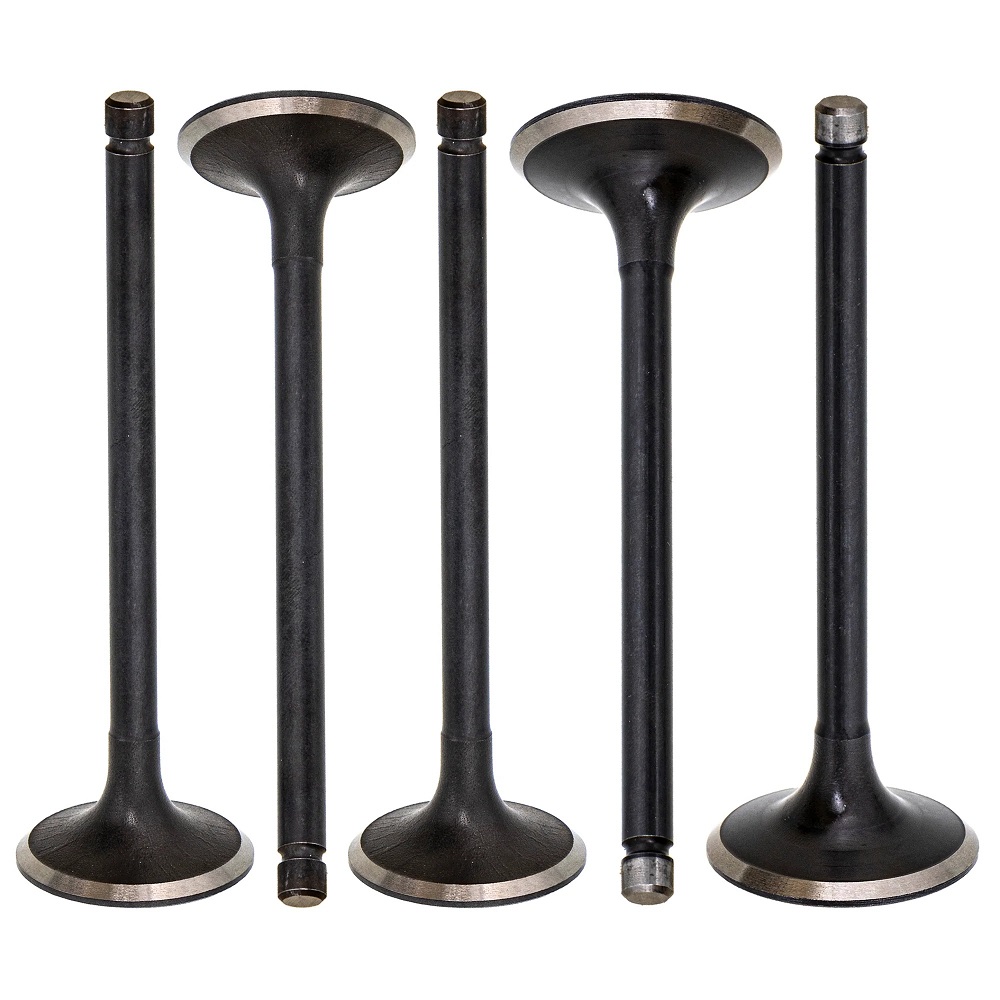
How Engine Valves Work
Engine valves perform a central role in the combustion process. They manage the air and fuel mixture and allow efficient gas exchange. Their precise operation is critical for engine efficiency and power output.
Role in the Internal Combustion Process
During the combustion cycle, engine valves control the timing of airflow and fuel entry. The intake valve allows air and fuel into the cylinder. This mixture is compressed and ignited for power generation. After combustion, the exhaust valve releases burned gases from the engine. Without proper valve operation, the engine would lose power and efficiency.
Engine valves ensure that the combustion process runs smoothly. They create the ideal conditions for energy generation. The synchronization of intake and exhaust valves directly impacts engine performance.
Opening and Closing Mechanisms
The opening and closing of engine valves are controlled by the camshaft. The camshaft is driven by the crankshaft through a timing belt or chain. Cams on the camshaft push the valves open at the correct moment. Springs then close the valves when the cam rotates away.
This precise mechanism ensures valves open and close at the perfect time. Proper timing is essential to maintain the correct air-fuel ratio and release burned gases. Any disruption in this mechanism can cause significant engine issues. Modern engines often use advanced technologies like variable valve timing to optimize performance further.
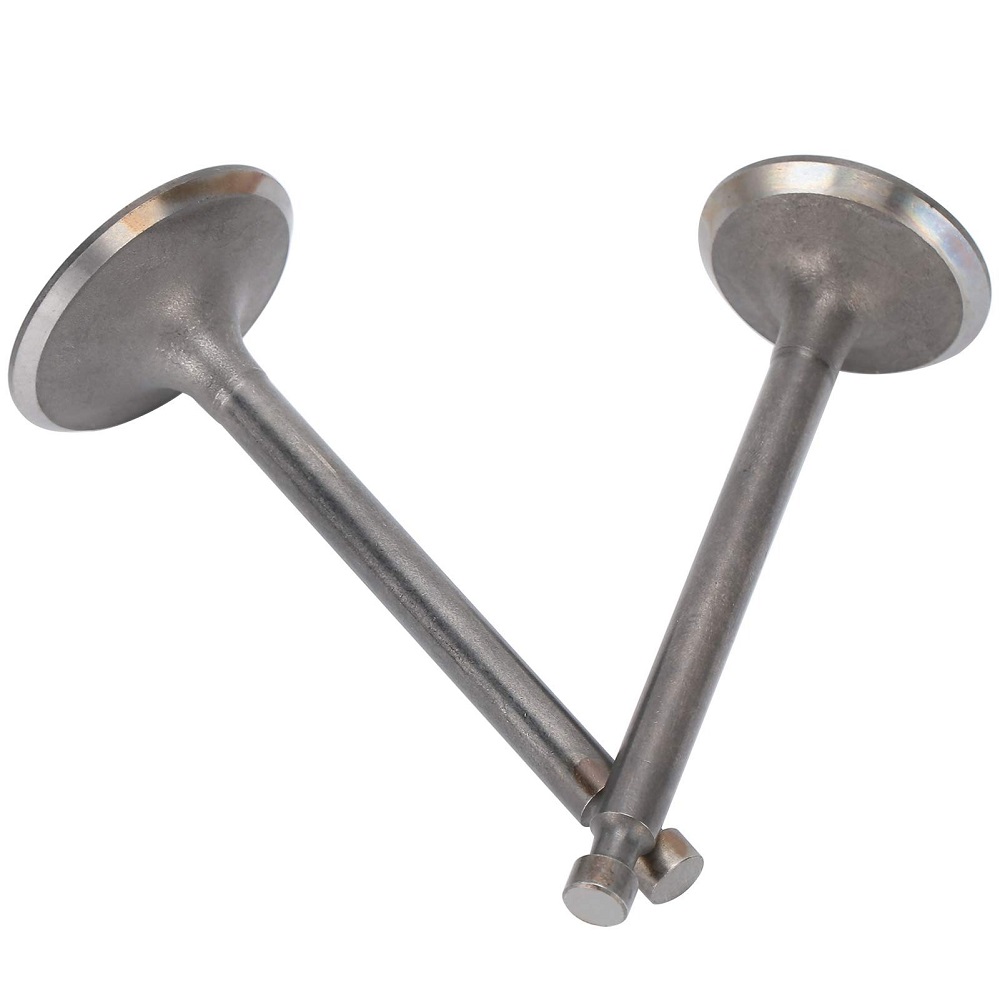
Common Types of Engine
Engine valves come in different designs to meet specific engine requirements. Each type serves unique functions and contributes to engine performance. Understanding these types helps in identifying their roles in the combustion process.
Intake Valves vs. Exhaust Valves
Intake Valves:
- These valves allow air and fuel to enter the engine’s combustion chamber.
- They open at specific times to enable an adequate mixture of air and fuel.
- Usually larger than exhaust valves to maximize airflow and engine efficiency.
Exhaust Valves:
- These release burnt gases from the combustion process out of the engine.
- They must withstand high temperatures and pressure from exhaust gases.
- Made with durable materials to ensure longevity under extreme conditions.
Both valve types work in harmony to support the combustion cycle. Proper operation ensures optimal power output and fuel efficiency.
Poppet Valves, Rotary Valves, and Other Variations
Poppet Valves:
- The most common type, featuring a stem and a head.
- Their design allows for precise sealing and efficient airflow.
- Used in most four-stroke internal combustion engines.
Rotary Valves:
- These rotate to control the opening and closing of ports.
- Common in high-performance engines, offering smooth and fast operation.
- Less prone to wear compared to poppet valves.
Reed Valves:
- Found mostly in two-stroke engines.
- Flexible metal reeds open and close based on pressure changes.
- Ideal for regulating gas flow efficiently in smaller engines.
Each variation is tailored to particular engine designs and applications. Selecting the right type is critical for optimal performance and durability.
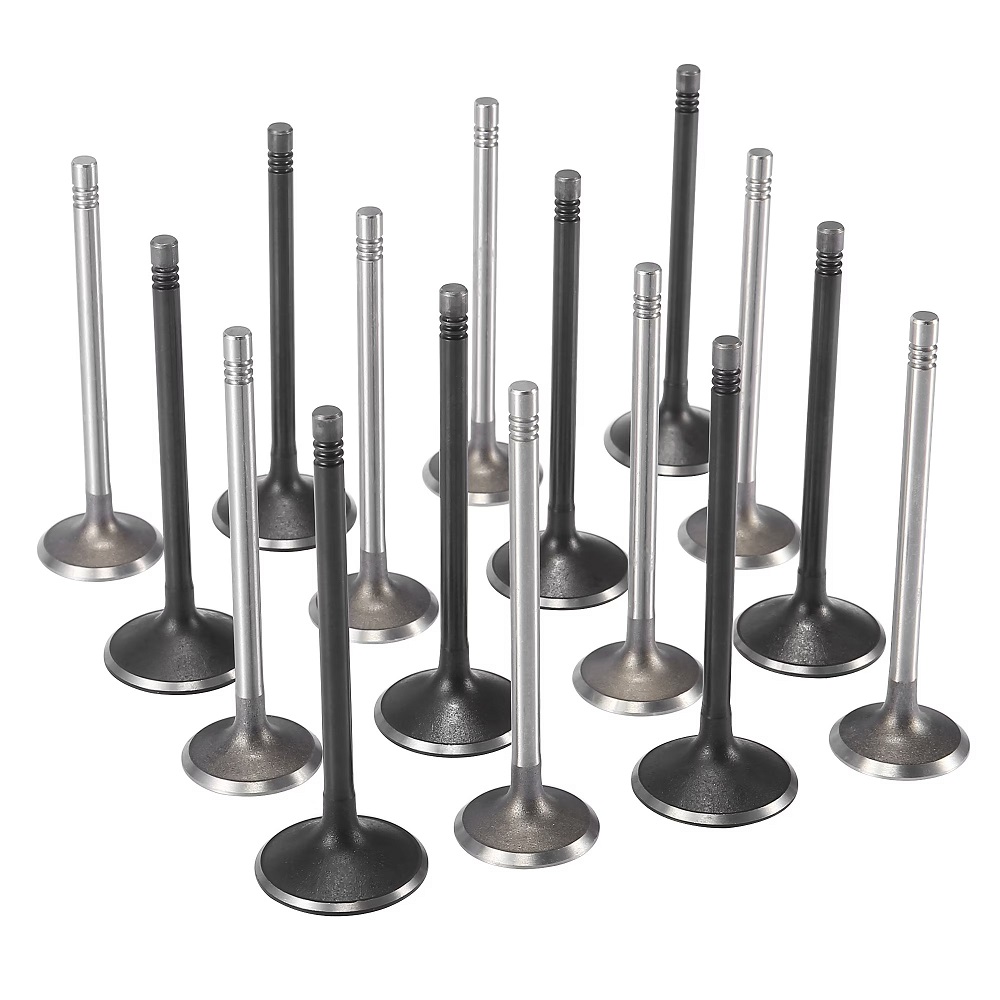
Materials and Construction of Engine
Engine valves must endure extreme conditions inside an engine. They are made with durability in mind. Proper materials and coatings ensure their reliability and performance over time.
Heat-Resistant Materials
Engine valves face high temperatures during operation. Heat-resistant materials keep them functional despite the heat.
- Steel Alloys: Most engine valves use steel alloys for durability and heat resistance.
- Inconel: A nickel-based alloy, Inconel handles extreme heat and stress efficiently.
- Titanium: Lightweight and strong, titanium is often used in performance engines.
These materials prevent valve deformation or cracking, helping engines work reliably.
Coatings and Treatments for Longevity
Valve coatings and treatments increase durability and reduce wear. They protect the valve from heat, corrosion, and friction.
- Nitriding: This process hardens the valve surface, improving wear resistance.
- Chromium Coatings: Chromium adds wear protection and reduces friction during operation.
- Ceramic Coatings: High-performance engines use ceramics for better heat and corrosion protection.
Proper coatings and treatments ensure valves last longer, even in tough conditions. Manufacturers choose these methods based on valve design and engine requirements.
Signs of Engine Valve Problems
Engine valve issues can significantly affect the performance and efficiency of your vehicle. Identifying these problems early can prevent costly repairs and maintain engine health.
Symptoms of Malfunctioning Valves
Recognizing the symptoms of faulty engine valves is crucial for maintaining engine performance. Common signs include:
- Loss of Power: The engine struggles to generate adequate power due to inefficient airflow.
- Misfiring Engine: Incomplete combustion leads to irregular engine operation and vibrations.
- Excessive Oil Consumption: Damaged valves can cause oil leaks into the combustion chamber, leading to reduced oil levels.
- Unusual Noises: Clattering or ticking sounds often indicate improper valve functioning.
- Dirty or Smelly Exhaust: Burnt oil or incomplete combustion results in black smoke or bad exhaust smell.
Monitoring these symptoms closely helps diagnose valve problems early. Quick action can save the engine from further damage.
Common Causes of Valve Damage
Understanding why engine valves fail is essential for prevention. Common causes of valve issues include:
- Overheating: Extreme engine heat can weaken or deform the valves over time.
- Wear and Tear: Prolonged use without proper maintenance leads to valve deterioration.
- Poor Lubrication: Insufficient lubrication increases friction, causing damage to valve surfaces.
- Carbon Build-Up: Deposits from fuel combustion clog the valves, reducing efficiency.
- Incorrect Timing: Faulty valve timing can stress the components or cause collisions.
- Foreign Object Damage: Dirt or debris entering the engine can scratch or crack the valves.
Regular inspection and following maintenance guidelines help reduce valve damage risks. By understanding these causes, you can take steps to preserve engine valve integrity.
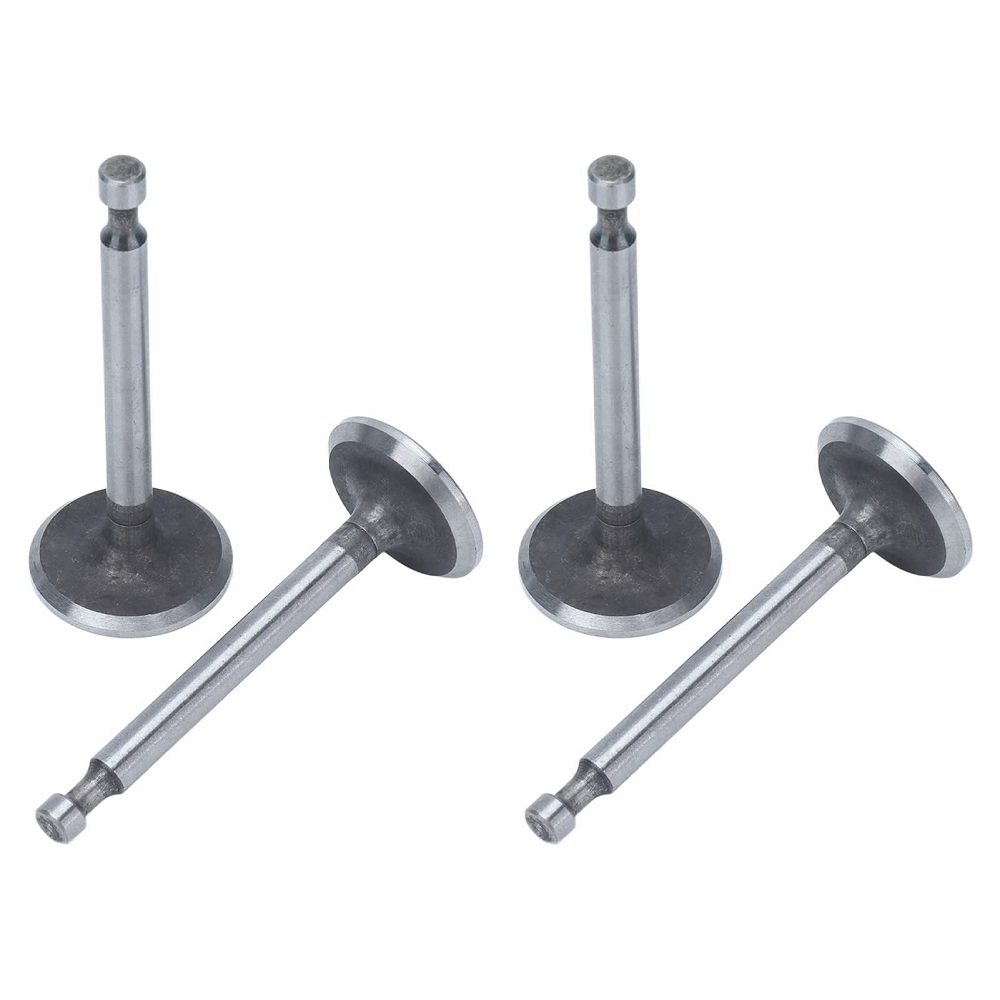
Engine Valve Maintenance and Care
Maintaining engine valves is vital for optimal engine performance and longevity. Regular care prevents costly repairs.
Proper Lubrication
- Importance of Lubrication:
- Lubrication minimizes friction between engine valves and related components.
- It reduces wear, heat, and the risk of valve seizure.
- Choosing the Right Oil:
- Use engine oil recommended by your vehicle’s manufacturer.
- High-quality lubricants enhance valve performance and lifespan.
- Regular Oil Changes:
- Change oil as per the manufacturer’s schedule to ensure consistent lubrication.
- Contaminated oil can cause valve deposits and reduced efficiency.
- Check Oil Levels:
- Low oil levels increase friction and can damage engine valves.
- Always maintain adequate oil levels for optimal operation.
Recommended Inspection and Replacement Intervals
- Periodic Inspections:
- Inspect engine valves during routine maintenance to check for wear or damage.
- Look for bent, cracked, or carbon-clogged valves.
- Replacement Guidelines:
- Replace valves if significant wear or damage is found during inspection.
- Follow the manufacturer’s recommendations for valve replacement timelines.
- Professional Assistance:
- Use certified mechanics for inspections and replacements.
- Improper handling can lead to more significant engine damage.
- Signs Replacement is Needed:
- Replace valves if you notice power loss, unusual noises, or increased oil consumption.
Proper lubrication and timely inspections save you from expensive engine issues. Consistency in maintenance is key to ensuring your engine valves perform at their best.
The Role of Engine Timing
Engine valve timing is critical for engine performance and efficiency. It determines when valves open and close during the combustion cycle. Proper timing ensures a balanced air-fuel mixture, smooth exhaust release, and optimized power output. Incorrect timing leads to poor combustion, reduced performance, or even engine damage.
Understanding Valve Timing Adjustments
- What Is Valve Timing?Valve timing refers to controlling the opening and closing of an engine’s intake and exhaust valves. It happens in coordination with the engine’s stroke cycle. Adjusting this timing optimizes power, efficiency, and emissions.
- Importance of Timing Adjustments:
- Proper timing enhances air-fuel intake and smooth gas expulsion.
- It supports engines operating at different loads and speeds.
- It reduces problems like knocking or misfiring.
- Variable Valve Timing (VVT):
- Purpose: Modern engines use VVT systems to adjust timing dynamically.
- Benefits: VVT enhances performance across various RPM ranges and improves fuel economy.
- Examples: Technologies like VTEC (Honda) and VVT-i (Toyota) enhance engine valve timing flexibility.
Valve timing adjustments play an essential role in modern engine efficiency and reliability.
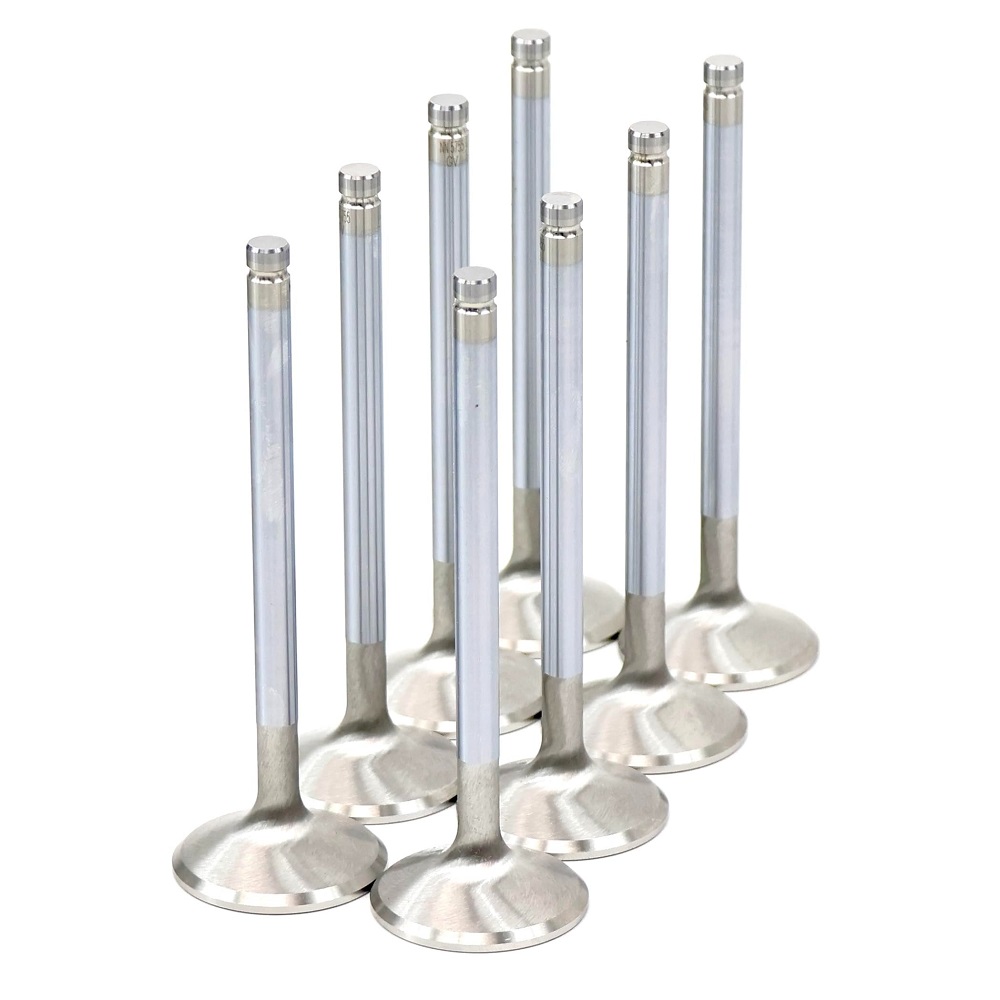
Relationship with Camshaft and Crankshaft
- Camshaft’s Role:
- The camshaft operates engine valves in sync with the crankshaft.
- Cam lobes push valves open and allow springs to close them as needed.
- Crankshaft’s Role:
- The crankshaft turns the camshaft through a timing belt or chain connection.
- This connection ensures the camshaft and crankshaft rotate harmoniously.
- Timing Belt or Chain:
- Used to synchronize crankshaft and camshaft movements.
- Proper tension prevents misalignment and ensures consistent valve operation.
- Impact of Misaligned Timing:
- An incorrect connection disrupts the combustion process.
- This can lead to knocking, power loss, or valve collisions with pistons.
The relationship between camshaft, crankshaft, and timing systems is critical for engine health and efficiency.
Innovations and Future Trends in Engine
Engine valves continue to evolve with advancements in materials and technology. These innovations aim at enhancing durability, efficiency, and environmental standards. Meanwhile, manufacturers face challenges and opportunities that shape future valve designs.
Advancements in Materials and Technology
- Lightweight Alloys:
- Modern engine valves utilize lightweight alloys like titanium for improved performance.
- Lightweight materials increase power-to-weight ratios in performance engines.
- Additive Manufacturing:
- 3D printing is revolutionizing valve production for customized designs and faster manufacturing.
- This process improves precision and reduces waste.
- Enhanced Coatings:
- Advanced coatings, including DLC (Diamond-Like Carbon), reduce wear and friction.
- Future coatings aim for higher heat tolerance and corrosion resistance.
- Smart Valve Technology:
- Sensors integrated into valves provide real-time performance data.
- These smart systems help monitor wear and optimize timing dynamically.
- Eco-Friendly Innovations:
- Materials and designs focus on reducing emissions.
- Valves are being crafted to resist carbon build-up and ensure cleaner combustion.
Challenges and Opportunities in Engine Valve Design
- Reducing Weight Without Sacrificing Strength:
- Manufacturers seek ways to make valves lighter while maintaining durability.
- Advanced alloys and composites are key solutions.
- Improving Fuel Efficiency:
- Valves need to support innovations that optimize combustion and reduce fuel consumption.
- Variable valve timing systems continue to enhance efficiency.
- Compliance with Environmental Standards:
- Stricter regulations push the industry towards cleaner technologies.
- Engine valves play a significant role in reducing emissions.
- Cost Reduction Amid High Expectations:
- Creating high-performance, low-cost materials remains a major challenge.
- Economical manufacturing techniques must balance cost and quality.
- Integration with Hybrid and Electric Engines:
- Hybrid engines use advanced valves for enhanced efficiency.
- Electric vehicles may require different types of valve technology altogether.
Innovative valve technologies will help engines meet future demands for power, efficiency, and sustainability. Manufacturers can unlock exciting opportunities by addressing key challenges in design and material selection.
Prioritizing Engine Valve Health
The Essential Role of Engine Valves
In summary, engine valves play a pivotal role in the overall functioning of internal combustion engines. They regulate the flow of air and fuel, allowing for efficient combustion and power generation. Understanding the functions of engine valves and recognizing the signs of potential problems is crucial for every vehicle owner. Awareness of how your engine valves operate helps you maintain their health and prolong your vehicle’s performance.
Importance of Regular Maintenance
Regular maintenance and inspections are essential for keeping your engine valves in optimal condition. By prioritizing routine checks, oil changes, and professional maintenance, you can ensure that your engine operates efficiently. These practices can prevent minor issues from developing into significant problems, which can save you time and money in repairs.
Embracing Knowledge and Care
Ultimately, understanding the critical features of engine valve and how to maintain them empowers you as a vehicle owner. With this knowledge, you can make informed decisions and feel confident about the care of your vehicle. By embracing the importance of engine valve health, you contribute to overall vehicle longevity and reliability. Take pride in your role as a responsible vehicle owner, and enjoy the peace of mind that comes with knowing your engine is in good condition!
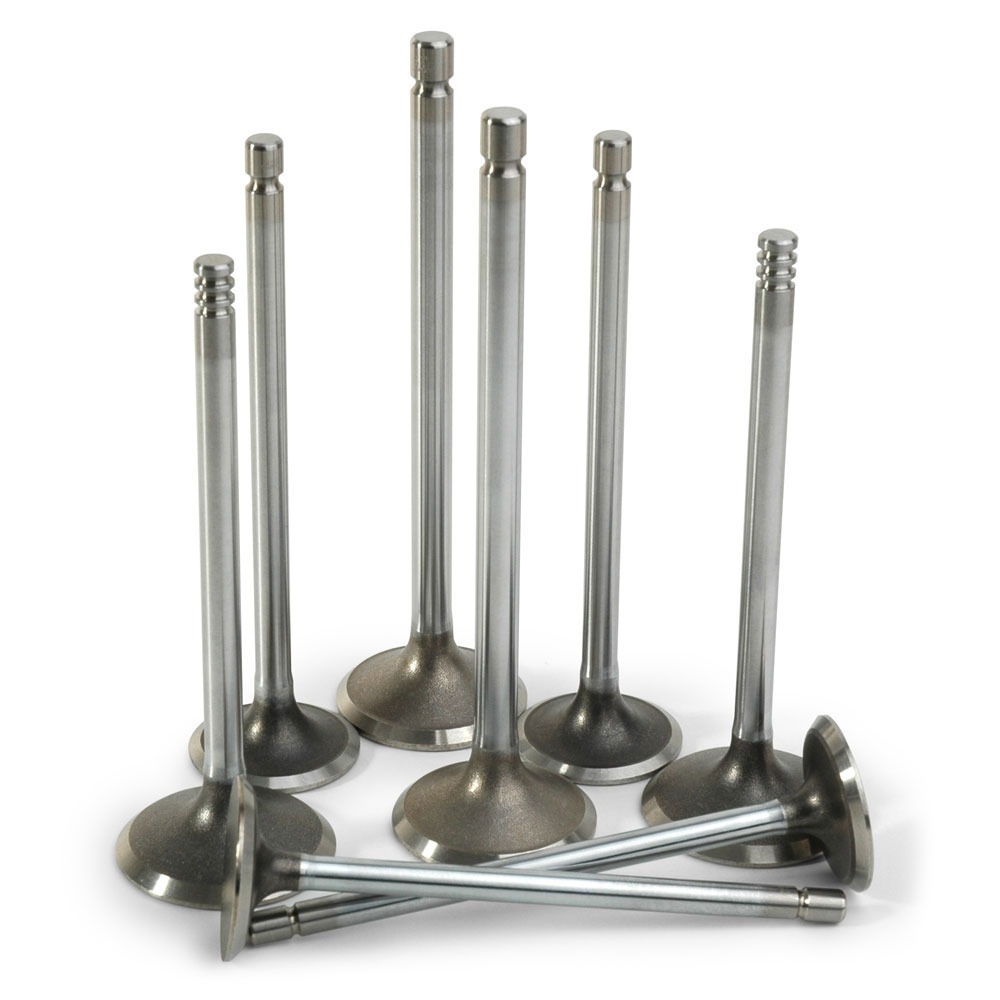
Leave a Reply